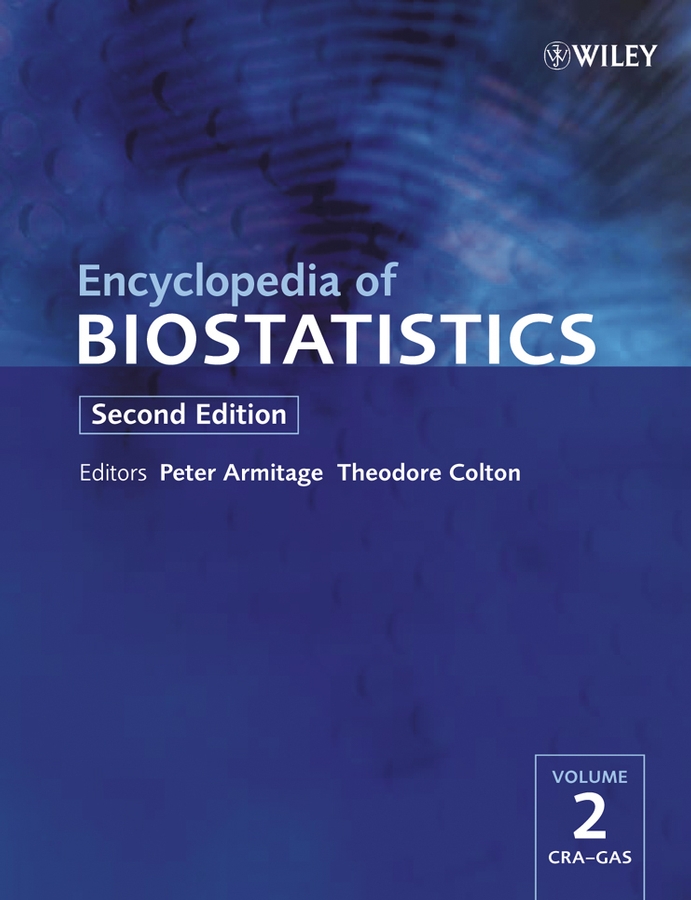Abstract
This contribution provides an overview of the commonly used measures of association for categorical variables. The discussion of these measures is broken down by (1) the size of the contingency table, (2) the measurement scale of the variables involved, and (3) the interpretability of the measure.
References
- 1 Agresti, A. (1984). Analysis of Ordinal Categorical Data. Wiley, New York.
- 2
Agresti, A.
(2002).
Categorical Data Analysis
2nd Ed.
Wiley,
New York.
10.1002/0471249688 Google Scholar
- 3 Altham, P. M. E. (1970). The measurement of association of rows and columns for an r × s contingency table, Journal of the Royal Statistical Society, Series B 32, 63–73.
- 4 Anscombe, F. J. (1956). On estimating binomial response relations, Biometrika 43, 461–464.
- 5 Bross, I. D. J. (1958). How to use ridit analysis, Biometrics 14, 18–38.
- 6 Carroll, J. B. (1961). The nature of the data, or how to choose a correlation coefficient, Psychometrika 26, 347–372.
- 7 Copeland, K. T., Checkoway, H., McMichael, A. J. & Holbrook, R. H. (1977). Bias due to misclassification in the estimation of relative risk, American Journal of Epidemiology 105, 488–495.
- 8 Doolittle, M. H. (1885). The verification of predictions (abstract), Bulletin of the Philosophical Society of Washington 7, 122–127.
- 9 Edwards, A. W. F. (1963). The measure of association in a 2 × 2 table, Journal of the Royal Statistical Society, Series A 126, 109–114.
- 10 Fisher, R. A. (1948). Statistical Methods for Research Workers, 10th Ed. Hafner, New York.
- 11 Fleiss, J. L. (1981). Statistical Methods for Rates and Proportions, 2nd Ed. Wiley, New York.
- 12 Gart, J. J. (1966). Alternative analyses of contingency tables, Journal of the Royal Statistical Society, Series B 28, 164–179.
- 13 Gart, J. J. (1971). The comparison of proportions: a review of significance tests, confidence intervals and adjustments for stratification, Review of the International Statistical Institute 39, 148–169.
- 14 Gart, J. J. & Zweifel, J. R. (1967). On the bias of various estimators of the logit and its variance, with application to quantal bioassay, Biometrika 54, 181–187.
- 15 Goldberg, J. D. (1975). The effects of misclassification on the bias in the difference between two proportions and the relative odds in the fourfold table, Journal of the American Statistical Association 70, 561–567.
- 16 Goodman, L. A. (1964). Simultaneous confidence intervals for contrasts among multinomial populations, Annals of Mathematical Statistics 35, 716–725.
- 17
Goodman, L. A. &
Kruskal, W. H.
(1979).
Measures of Association for Cross Classifications.
Springer-Verlag,
New York.
10.1007/978-1-4612-9995-0 Google Scholar
- 18 Guttman, L. (1941). An outline of the statistical theory of prediction. Supplementary Study B-1, in The Prediction of Personal Adjustment, Paul Horst and others, eds. Bulletin 48, Social Science Research Council, New York, pp. 253–318.
- 19 Kendall, M. G. (1945). The treatment of ties in rank problems, Biometrika 33, 239–251.
- 20 Kendall, M. G. (1970). Rank Correlation Methods, 4th Ed. Hafner, New York.
- 21 Kendall, M. G. & Stuart, A. (1979). The Advanced Theory of Statistics, Vol. 2, 4th Ed. Griffin, London.
- 22 Keyes, A. & Kihlberg, J. K. (1963). The effect of misclassification on estimated relative prevalence of a characteristic, American Journal of Public Health 53, 1656–1665.
- 23 Koch, G. G. (1969). The effect of non-sampling errors on measures of association in 2 × 2 contingency tables, Journal of the American Statistical Association 64, 852–863.
- 24 Kruskal, W. H. (1958). Ordinal measures of association, Journal of the American Statistical Association 53, 814–861.
- 25 Landis, J. R. Heyman, E. R. & Koch, G. G. (1978). Average partial association in three-way contingency tables: a review and discussion of alternative tests, International Statistical Review 46, 237–254.
- 26 Mantel, N. & Haenszel, W. (1959). Statistical aspects of the analysis of data from retrospective studies of disease, Journal of the National Cancer Institute 22, 719–748.
- 27 Mosteller, F. (1968). Association and estimation in contingency tables, Journal of the American Statistical Association 63, 1–28.
- 28 Pearson, K. 1904 Mathematical contributions to the theory of evolution XIII: on the theory of contingency and its relation to association and normal correlation, Draper's Co. Research Memoirs, Biometric Series, no. 1.
- 29 Pearson, K. (1906). On a coefficient of class heterogeneity or divergence, Biometrika 5, 198–203.
- 30
Pearson, K.
(1913).
On the probable error of a correlation coefficient as found from a fourfold table,
Biometrika
9,
22–27.
10.1093/biomet/9.1-2.22 Google Scholar
- 31 Rogot, E. (1961). A note on measurement errors and detecting real differences, Journal of the American Statistical Association 56, 314–319.
- 32 Semenya, K., Koch, G. G., Stokes, M. E. & Forthofer, R. N. (1983). Linear models methods for some rank function analyses of ordinal categorical data, Communications in Statistics—Theory and Methods 12, 1277–1298.
- 33
Sokal, R. R. &
Rohlf, F. J.
(1995).
Biometry,
3rd Ed.
Freeman,
New York.
10.1577/1548-8659(1986)115<149:LOPDOR>2.0.CO;2 Google Scholar
- 34 Somers, R. H. (1962). A new asymmetric measure of association for ordinal variables, American Sociological Review 27, 799–811.
- 35 Stuart, A. (1953). The estimation and comparison of strengths of association in contingency tables, Biometrika 40, 105–110.
- 36 Theil, H. (1970). On the estimation of relationships involving qualitative variables, American Journal of Sociology 76, 103–154.
- 37 Yule, G. U. (1900). On the association of attributes in statistics, Philosophical Transactions of the Royal Society, Series A 194, 257–319.
- 38 Yule, G. U. (1912). On the methods of measuring association between two attributes (with discussion), Journal of the Royal Statistical Society 75, 579–642.



